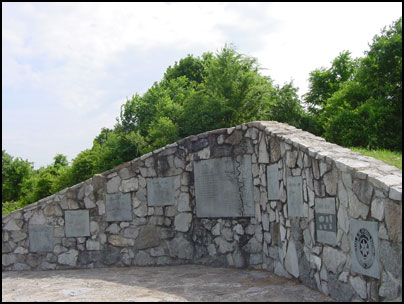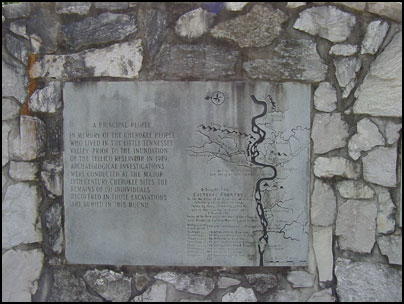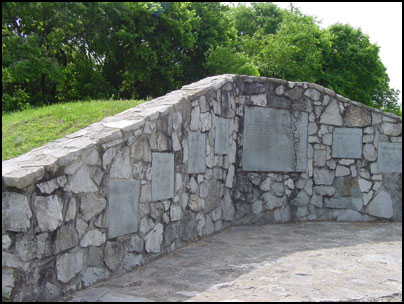 Sequoyah was born in the 1770s in the Cherokee village of Tuskegee on the Tennessee River. His name Sikwo-yi is Cherokee for “pig’s foot,” which leads many to believed that he was crippled. Sequoyah was a mixed-blood Cherokee. His mother, Wureth, was a member of the Paint Clan. His father, Nathaniel Gist, was a Virginia fur trader. Sequoyah was sometimes known by his English name George Gist or Guess.
Sequoyah was born in the 1770s in the Cherokee village of Tuskegee on the Tennessee River. His name Sikwo-yi is Cherokee for “pig’s foot,” which leads many to believed that he was crippled. Sequoyah was a mixed-blood Cherokee. His mother, Wureth, was a member of the Paint Clan. His father, Nathaniel Gist, was a Virginia fur trader. Sequoyah was sometimes known by his English name George Gist or Guess.
In 1809 while working as a silversmith in Georgia, Sequoyah learned how to sign his name on his work. This was where Sequoyah first had the idea for a Cherokee writing system. While serving in the US army during the Creek War (1813-1814) the idea blossomed. He noticed that the American soldiers were writing letters home, writing and reading orders, and recording the events of the war as they happened. Sequoyah realized that a written language could be very beneficial to the Cherokee. He worked for many years developing the characters. Each of the 85 characters Sequoyah created stand for a syllable in the Cherokee language. In 1821 the Cherokee Nation reviewed and adopted the syllabary. The syllabary is remarkably complete and no additions have ever needed to be made.
The Cherokee syllabary is the only alphabet developed by a single person. In 1828 using the new syllabary, the Cherokee established the Cherokee Phoenix, the first newspaper published by American Indians. The paper was published in both Cherokee and English.
After the Cherokee Nation adopted the syllabary it was only a matter of months before thousands of Cherokees were literate, able to read and write Cherokee. Sequoyah was celebrated as a genius and honored by the Cherokee Nation. He spent the rest of his life teaching the Cherokee language. He moved to Indian Territory with the “Old Settlers” but later left Indian Territory for Mexico, where he passed away. The exact location is still unknown. He is one of the best known Cherokee in history and is still considered a genius.
This museum is very near where Sequoyah was born, but unfortunately the actual location was inundated with water in 1979 with the creation of Tellico Lake. A replica of a Tuskegee home stands on the grounds of Fort Loudoun. Additionally, as the TVA prepared the area for inundation, a series of archeological digs at the nearby village of Chota unearthed 91 burials. These burials were reinterred in 1986 at the Sequoyah Birthplace Museum and today a marker and burial mound honor these individuals.


Sequoyah’s Birthplace Memorial Travel Details
Open Monday through Saturday 9:00 a.m. to 5:00 p.m. and Sunday noon to 5:00 p.m. Closed Thanksgiving Day, Christmas Day, and New Year’s Day. There is a nominal admission fee.
Directions: From Vonore travel east on highway 360. For specific directions, click the “Directions” link in the location bubble of the map above and enter your starting location on the left.
GPS & Map: 35.579499419909354,-84.21767234802246